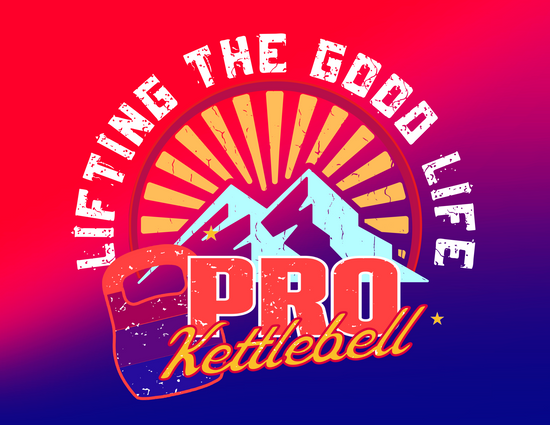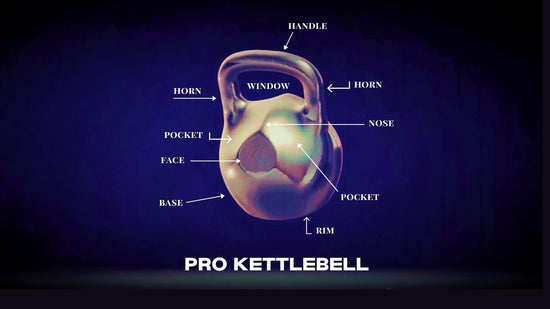Does It Really Matter How You Hold a Kettlebell?
There are people who've been using kettlebells with a dumbbell grip for many years who will be hard to convince changing their technique is worth the hassle, but hear ye newcomers, those who train heavy, those who train very high reps, and those who are getting a little more mature in years, heck yes, it matters.
In this article, we'll cover:
- tips for correcting your grip
- catching a kettlebell out of a swing: hand insertion technique
- handle orientation
- hand orientation variations


3 Reasons to Adopt a Proper Kettlebell Grip
You wouldn't hold a dumbbell like a kettlebell, but many people default to holding a kettlebell like a dumbbell.
There are several reasons you don't want to hold a kettlebell like a dumbbell.
#1) Holding a kettlebell like a dumbbell puts extra strain on the wrist,
#2) Holding a kettlebell like a dumbbell gives the kettlebell more leverage to use against you. Especially when you add momentum, without the full hand insertion and contact you gain from a proper hold, the dumbbell hold increases risk of injury - during overhead movements specifically, because...
#3) The dumbbell hold allows a kettlebell to wobble and sit further behind joints. Just like with barbells and dumbbells, letting the mass of the kettlebell get too far behind your shoulders rather than keeping it in alignment over your shoulder can cause excessive strain on your rotator cuff; a leading injury.
These are just our top 3 reasons, but they alone are enough to take the time and care to learn how to hold a kettlebell properly.
Pro Kettlebells were Designed for Proper Kettlebell Grip Technique
At Pro Kettlebell, we designed our kettlebells to encourage lifters to use a proper overhead and racked grip, like the photos and slow-motion kettlebell hand insertion video below demonstrates.
Not only does it protect shoulder health, but the contours in Pro Kettlebells cradle the forearm of the lifter, spreading out the load and making it far more comfortable than traditional kettlebells.
The technique we're talking about applies to all kinds of kettlebells, though. Doesn't matter if it's a small cast iron hardstyle bell or a traditional competition kettlebell or a Pro Kettlebell, taking control of the kettlebell with maximum contact and leverage is the goal.




The All-Important Kettlebell Grip Insertion
Insertion is a transition.
It's when you move from holding the handle in your finger tips to holding it with the grip we've been discussing.
It's the movement of pushing your hand through to the final position, where the crook of your thumb and pointer finger are nestled into the corner of the handle, the rest of the handle crosses your palm at about a 45-degree angle so that the bottom corner of the handle touches further down your forearm/wrist.
You Can Take Many Roads to the Same Place
Hopefully, this blog will give you some insight and ideas to bring to your kettlebell training sessions to fine-tune your hand insertion and use a proper kettlebell grip, like a pro.
One major point, though... as briefly referenced in the video below, it's the holding of the kettlebell that we're talking about here, and there are many different ways to begin the swing or pull that ends in this racked or overhead kettlebell grip.
Gritty Details: Handle Orientation
In the video, you see the lifter holds the kettlebell properly in the corner, and then skips her hand to the other end of the handle for the backswing.
She could have kept her hold at the same spot, or moved it just slightly, to the center.
It's lifter's choice where you hold the handle to start, and also the orientation of the handle of the kettlebell in relation to your body when you start.
She also could keep the orientation of the handle vertical through the drop and swing or let the angle of the handle change as it swings backward. There's a clip of each. Neither is right or wrong.

Negotiables vs. Non-Negotiables. Finding Your Kettlebell Lifting Style
Imagine the kettlebell setting on the ground in front of you prior to hiking it into a swing. Is your handle parallel to your body, perpendicular, or angled?
I encourage playing with the different options to see what feels best for you.
- Most likely, if you utilize a thumbs-forward swing you'll start with the handle perpendicular to your body.
- If you have a neutral or thumbs-back swing, you'll likely start with the handle parallel or at an angle.
You'll find trainers that will urge you to one or another for various reasons, but I'll still call those "negotiables."
But where you grab the handle and at what orientation will affect the path you take and the insertion timing necessary to make your perfect "catch," and kettlebell grip.
Most notably, if you have a thumbs-back swing, you will have to rotate the bell as it swings upward to get the end of the handle that your thumb is closest to facing upward for the moment of insertion.
Ready to practice your perfect grip? Get your hands on a Pro Kettlebell.





